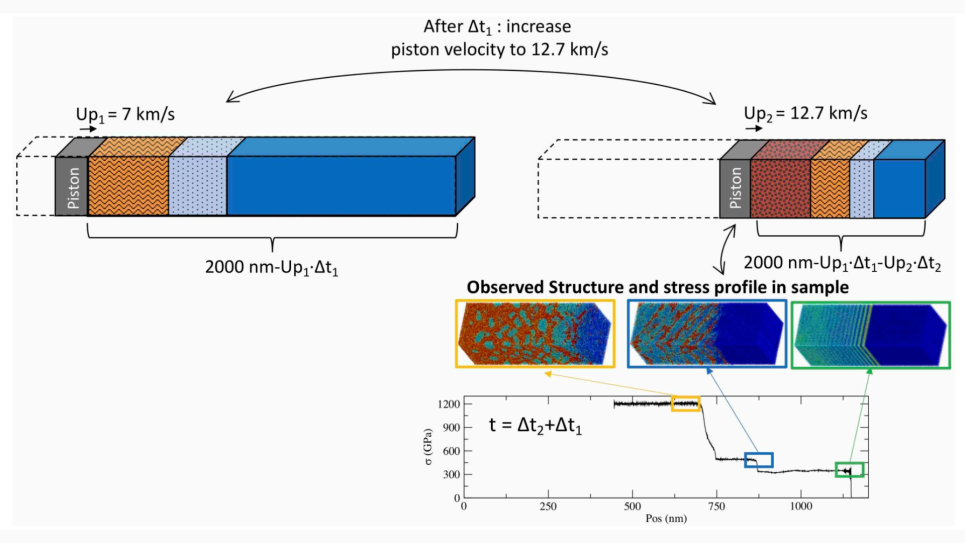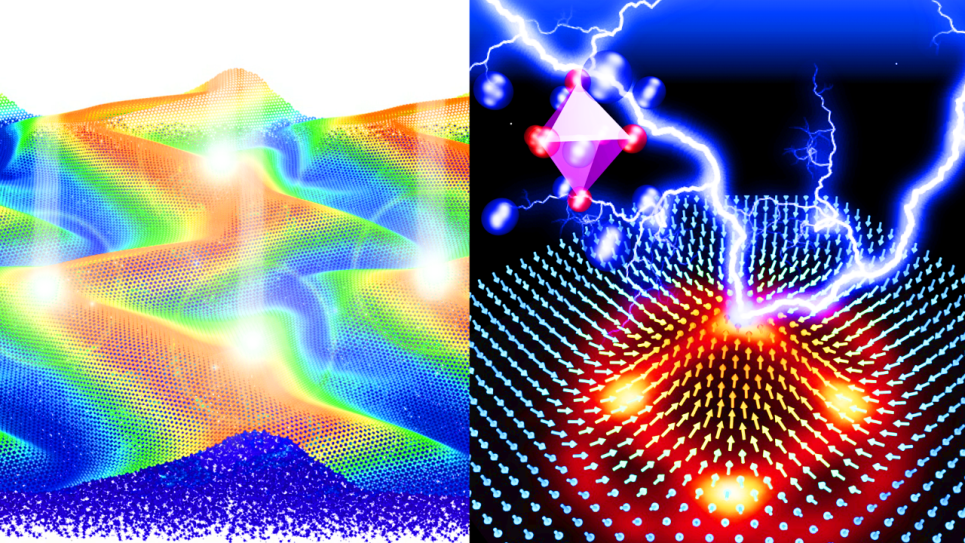
Schematic of double shock simulations. The first compression wave is generated by a piston moving with constant velocity. The double shock compression is initiated by increasing piston velocity to a time instant. Three-wave structure due to elastic-inelastic shock wave splitting of the first compression is shown after the second piston velocity applied within time interval.


